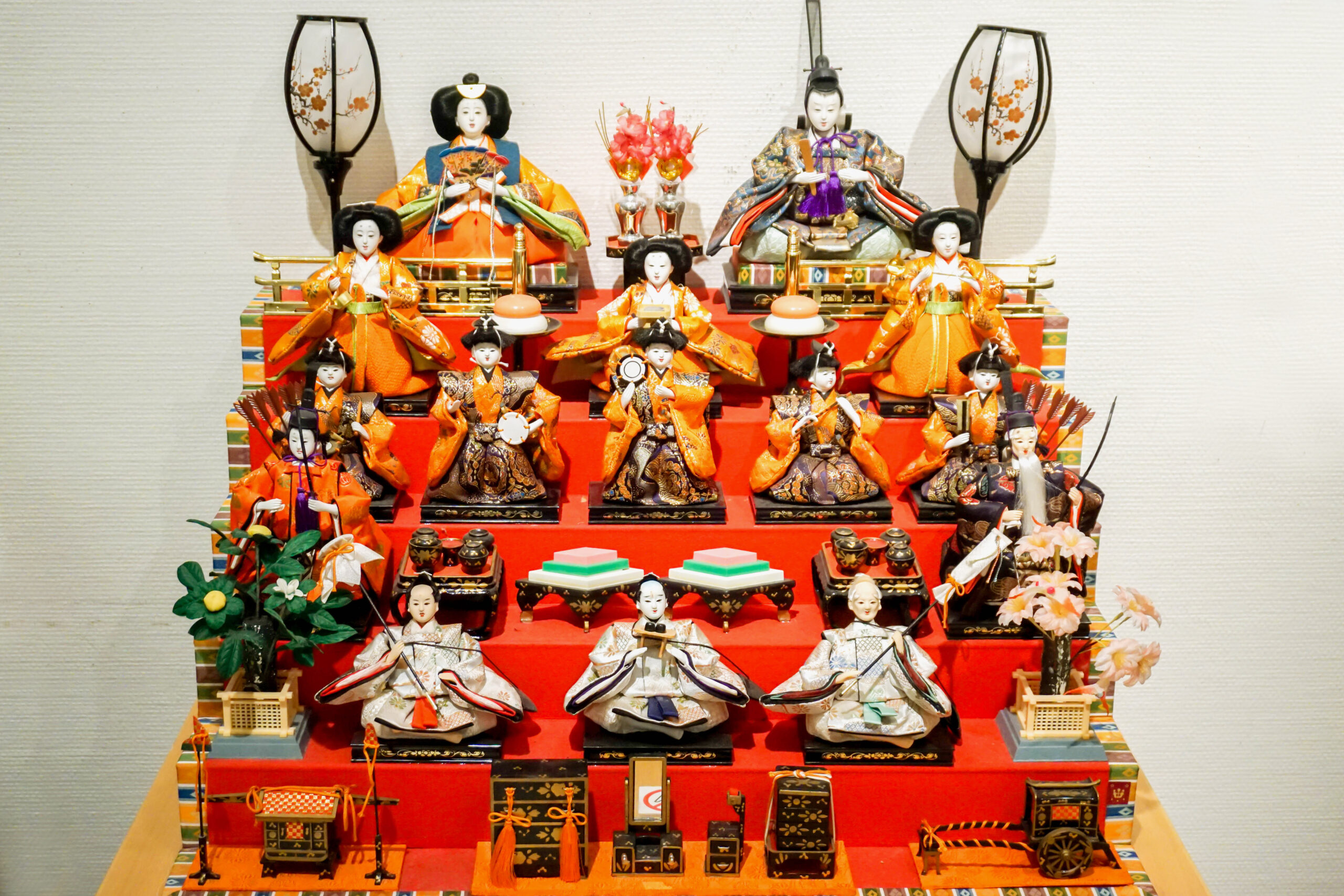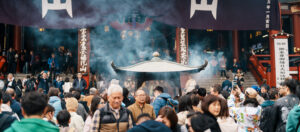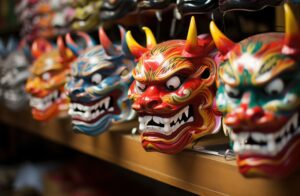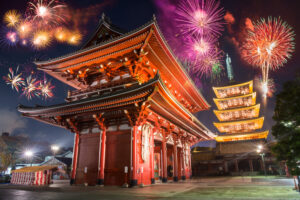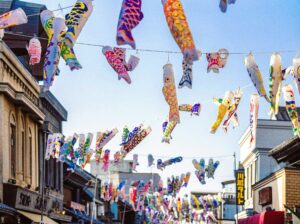In the heart of Japan’s cultural tapestry lies Hina Matsuri, a time-honored festival that unfurls every 3rd of March, celebrating the health and happiness of young girls. This vibrant tradition, also known as Doll’s Day or Girls’ Day, is marked by the display of ornate dolls, feasting on special foods, and a series of rituals aimed at ensuring the prosperity of girls. As we delve into the essence of Hina Matsuri, we uncover an intricate blend of history, art, family, and societal values that continues to thrive in modern Japan, bridging generations through its timeless appeal.
Unveiling Hina Matsuri: Japan’s Cherished Ritual
Hina Matsuri stands as a beacon of cultural pride, a day dedicated to the well-being of young girls across Japan. The festival is characterized by households with girls displaying a set of ornamental dolls, known as Hina Ningyo, which represent the Emperor, Empress, and their courtiers in traditional court dress of the Heian period. This practice is not only a visual feast but a deeply spiritual one, believed to ward off bad spirits and bring about good fortune. Families begin preparations weeks in advance, setting up elaborate displays that transform their homes into spaces of reverence and celebration.
The Origins of Hina Matsuri: A Historical Journey
The roots of Hina Matsuri trace back to the Heian period (794-1185), evolving from an ancient Chinese practice where people would transfer their sins and misfortunes to dolls made of paper or straw, then cast them into rivers to be washed away. Over time, this custom merged with Japanese Imperial traditions, leading to the refinement of doll displays in aristocratic households. By the Edo period (1603-1868), Hina Matsuri had spread throughout Japan, becoming a widespread tradition that underscored the society’s emphasis on family and community well-being.
Celebrating Girls: The Core of Hina Matsuri
Central to Hina Matsuri is the celebration of girls’ growth, happiness, and health. It’s a day when families express their hopes for their daughters to lead lives of prosperity and joy. The ritual of displaying Hina dolls acts as a protective charm, with parents painstakingly setting up the dolls to pray for their daughters’ well-being. This celebration is also an opportunity for girls to learn about their cultural heritage, wearing traditional kimonos and participating in family gatherings that strengthen bonds and foster a sense of identity.
The Elegance of Hina Dolls: Artistic Marvels Uncovered
Hina dolls are not mere playthings but works of art that embody Japan’s rich craftsmanship. Each doll is meticulously dressed in costumes of the Heian period, with detailed expressions and accessories that reflect their imperial status. Artisans spend months, sometimes years, crafting these figures from materials like wood, silk, and paper, ensuring each piece exudes a lifelike quality. The craftsmanship behind Hina dolls is a testament to Japan’s dedication to preserving its cultural artifacts, with some dolls being passed down through generations as cherished heirlooms.
The Configuration of Hina Doll Displays: A Deep Dive
The arrangement of Hina dolls follows a precise order, usually set on a seven-tiered stand covered with a red carpet. At the top sits the Emperor and Empress, followed by three court ladies, five musicians, two ministers, and three samurai as protectors. This hierarchical display is not just about aesthetics but echoes the societal structure of the Heian period, offering insight into Japan’s historical governance and social customs. Each doll plays a specific role, contributing to the retelling of a time when poetry and culture flourished under imperial rule.
Traditional Foods of Hina Matsuri: A Culinary Tour
Hina Matsuri is also a feast for the senses, with special foods that carry symbolic meanings. Chirashizushi, a colorful scattering of sushi rice, vegetables, and seafood, represents fertility and health. Hishimochi, diamond-shaped rice cakes in pink, white, and green, symbolize longevity and the changing seasons. Families also enjoy clam soup, which is associated with unity and a harmonious marriage. These traditional dishes are not only delicious but steeped in the wishes and hopes for the girls’ futures.
Crafting Hina Dolls: A Testament to Artisan Skill
The creation of Hina dolls is a painstaking process that requires the skillful hands of seasoned artisans. From the delicate painting of faces to the intricate sewing of silk garments, each step is imbued with dedication and precision. The artisans’ commitment to maintaining high standards of craftsmanship ensures the continuation of a tradition that has been admired for centuries. As modernization brings new challenges, these craftsmen and women stand as guardians of a cultural heritage that remains vibrant and meaningful.
Regional Variations: Hina Matsuri Across Japan
While Hina Matsuri is celebrated nationwide, regional variations add a unique flavor to the festivities. In some areas, families may float paper dolls down rivers, echoing the original Chinese practice, while others showcase local crafts through their doll designs. These regional differences highlight the diversity within Japanese culture, showing how traditional practices adapt and flourish in different settings.
Hina Matsuri Today: Keeping Traditions Alive
In contemporary Japan, Hina Matsuri remains a cherished event, with families and communities coming together to celebrate their daughters. Despite the fast pace of modern life, the festival serves as a reminder of the importance of heritage and the value of preserving customs for future generations. Through school events, public exhibitions, and media, Hina Matsuri continues to captivate and educate, ensuring that this ancient festival remains a vibrant part of Japanese life.
Educational Aspect: Hina Matsuri in Japanese Schools
Japanese schools play a vital role in educating children about Hina Matsuri, incorporating lessons and activities that explore the festival’s history and customs. Through hands-on experiences like crafting paper dolls or preparing traditional foods, students gain a deeper appreciation of their cultural heritage. These educational initiatives not only enrich the students’ understanding but also foster a sense of pride and continuity in Japan’s rich traditions.
Hina Matsuri’s Influence on Japanese Culture
Hina Matsuri’s impact on Japanese culture extends beyond the festival itself, influencing art, literature, and even daily language. It’s a symbol of familial love, societal values, and the communal desire for the well-being of the next generation. As a cultural touchstone, the festival encapsulates Japan’s dedication to harmony, respect for tradition, and the celebration of life’s milestones.
The Future of Hina Matsuri: Preserving Traditions
Looking ahead, the future of Hina Matsuri lies in the hands of both the bearers of tradition and the innovators. As society evolves, so too must the ways in which cultural practices are maintained and adapted. By embracing modern methods while honoring historical roots, Japan can ensure that Hina Matsuri continues to be a beloved and meaningful celebration for centuries to come, connecting past, present, and future in a beautiful continuum of cultural pride.
Hina Matsuri illuminates the depth of Japan’s cultural identity, weaving together strands of history, art, family, and society into a tapestry that is both vibrant and enduring. As we’ve journeyed through the origins, practices, and lasting impact of this cherished festival, it’s clear that Hina Matsuri is more than just a day for dolls; it’s a celebration of life, love, and the hopes for every girl’s future. In preserving this tradition, Japan not only honors its past but also paves the way for a future where cultural heritage continues to enrich and shape the lives of its people.
